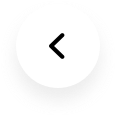Poland
1953, born in Lodz, Poland; 1974-1980, studied at the ?ód? State Art School/PWSSP (now the Strzemiński Academy of Art, ?ód?/ASP) at the Department of Industrial Design;
1980 - graduated with Master in Arts and began individual creative activities with focus on the artistic textile; 1991 - founded magazine "Text and textile - fiber art", where he served as publisher and editor-in-chief; 1992, became a member of the editorial board of "Fibres & Textiles in Eastern Europe”; 1994 - was appointed Head of the Department of Textile Art at the Fine Arts Academy in Gdansk; 1997 - began work at the Lodz University of Technology, where he currently works at the Institute of Architecture of Textiles and the Faculty of Material Technologies and Textile Design; 2002 - awarded with the title of Professor.
In the sixties of the 20th century, when at the Lausanne Biennial’s Polish artists unveiled new layers of creative potential that was previously hidden in the tapestry, there was an explosion of courage, crossing borders, unconventional thinking in this particular field of art, and more and more daring experiments were stimulating the imagination of artists. This is important, because the works presented in Lausanne, like a lens concentrated not just the triumphs, but also the emerging threats, accompanying the dynamic transformations of the new forms of artistic expression. Becoming three-dimensional and widening the gamut of tools of expression, on the one hand raised the attractiveness of the medium, while on the other hand, it moved tapestry away from its sources and characteristics. This resulted in the medium’s loss of identity. Exhibitions in Switzerland prove that the pursuit of an experiment overrides the essence and blurs the uniqueness of the traditional craftsmanship, which determines the very form of weaving. Thus, arguments have been heard about the exhaustion of the creative potential of tapestry.
Historical background allows one to see the oeuvre of W?odzimierz Cygan from a broader perspective as an antidote and invigorating pulse, restoring identity of the tapestry. It is a response to the difficult challenges faced by this field of art. In times when the experiment led fiber artists into blind alley, Cygan tried to answer the question posed in the title of his 1988 work And Where Am I Now? The question, that may be considered multifaceted, is also about the place and the condition of the medium in the contemporary art. While the leading Western artists of the 21st Century reannex traditional craft techniques into contemporary art by commissioning weaving studios to produce their projects (Kara Walker, Grayson Perry, Tracy Emin), W?odzimierz Cygan seeks and develops new formal solutions. Drawing from sources and basing on fundamental values and rules of the construction of the structure of weaving, he consistently constructs his own artistic language. Manipulating weft and warp, the basic elements of the structure, he re-evaluates their meanings. He brings out a kind of skeleton of the woven structure, and he makes visible the warp hitherto hidden beneath the surface, giving it unobvious form.
This skeleton which supports the surface built by a weft, takes on dynamic shapes formed by the artist. Freed from its parallel construction, the warp comes alive and opens up a wide range of possibilities to the artist. Still in close symbiosis with integrated weft, not only functions as a construction, determining the form of the work, but through the visible image of "ribs" indicates the character of the outer layer, the "skin" coating. Exceptional artworks are created, of the logical and systematic construction, and their expression is unusually poetic. Logic of the structure blends in with the flexibility of the fiber and with compositionally leading fluidity of the warp, which in the work of Cygan bends to form gentle curves, sometimes spreads radially, and in the next cycle (of works) finds its focus in the center and extends concentrically. This procedure has been applied by the artist in implementation of the Fireworks giving a dynamic picture of some cosmic energy emanations. This impression was compounded by the introduction of a negative space at the crucial point - the beginning of everything.Openwork not only determines the composition, but it is a kind of transfer to another dimension, literally and as metaphor. It stimulates the imagination, repeals the door to multiple interpretations, directs thoughts to spaces of the universe, the origins of life, the Big Bang theory. The composition spreading from the central point, the use of a varied range of weaves, and finally the perfect graphic solutions cause the work hypnotizing.
These cosmological references are yet present in the art of W?odzimierz Cygan though always far from the literal meaning, and closer to mysticism.Another way of introducing light as an equal part of construction of the work is the inclusion of fiber optic within the scope of weaving as an additional tool. While bringing the warp to the forefront and making it the hero of these works gives a formal layer of the tapestry more contemporary character, the use of new technological solutions breathed a refreshing mettle. This required the artist to explore the specifics of the new material. Cygan did not forget the traditional textile/tapestry, from which he grew, drew, and whose language he built from scratch. He subordinated fiber optics to the rigor of the principles of weaving, of warp's and weft's, and continued his journey of formal exploration.
Nature constitutes for the artist an inexhaustible source not only of inspiration but also of the essential elements needed for life - both biological and spiritual. Forms of the recent cycle have an explicit organic provenance. Directed upward, extending from the main axis fine lines of warp create subtle drawing, going beyond the main body of the piece in the form of loose fibers. They give the work an extraordinary fragility and lightness. Vertical silhouette of the works carries connotations of the totemic shapes, harking back to the civilization of ancient cultures, interpersonal relations, mystical bonds. The spiritual element perfectly expresses the light used in the construction. Fiber optics are like the bloodstream, breathing the refreshing spirit into the bodily form. With these artistic measures objects acquire dualistic nature. During the day, the material shell stimulates the sense of touch, twilight reveals their immateriality.
The oeuvre of W?odzimierz Cygan is a highly original phenomenon in the contemporary fiber art. It rejects treating the tapestry/textile art as mere imitation of painting or sculpture. Deliberately limiting the range of colors and color effects, associated to a great extend with painting, as well as defending against purely sculptural treatments, it strengthens those values that make up the essence of the textile art. The technical constraints become an ally of the artist; sensuality of the fiber builds sensuality of the pieces. The tactile perceptibility of weaving structures, their softness, plasticity and roughness at the same time makes it remaining faithful to the pedigree of the weaving. Range of black, gray and white allows perceiving the mastery of weave, perfection of design, but ultimately leads viewers’ attention to poetics of the communication. The unique intellectual-artistic approach makes Cygan continue along the path of experimentation and in search of new formal solutions, and while referring to the archetypes, it simultaneously applies contemporary technological achievements to express what’s spiritual and the ephemeral.
By Marta Kowalewska








